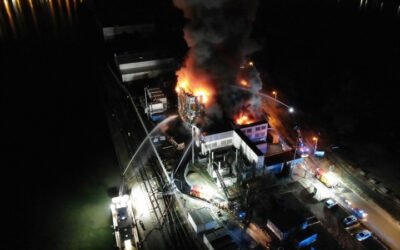Many organizations have annual disaster recovery (DR) test requirements, whether to run production operations from a secondary facility for several days or test the functionality of systems and applications running in a DR facility while production workloads run as usual. Every business should have a disaster recovery plan and perform a DR test, especially with recent virus and ransomware activity.
In the past, disaster recovery was much more complex. However, virtualization and cloud technologies significantly improved DR capabilities and the ability to run workloads in separate or multiple locations. While advantageous, it is crucial to check the functionality of systems, processes, and people resources.
How often should I perform a disaster recovery test?
Your business needs and requirements will determine the testing frequency, but an annual test is usually sufficient for many. It is essential to schedule the test well in advance, especially if it involves a third party. Finding time for all parties as the end of the year approaches will be difficult. If you make significant infrastructure or application changes, it may be worth performing an additional test.
What are the goals of a disaster recovery test?
While you may think the goals of a DR test are obvious, setting objectives helps keep tasks in scope and focused. Implementing a disaster recovery testing plan helps. You want to verify connectivity and application functionality and ensure you have the appropriate users available to assist. Believe it or not, running into problems during your DR test can be a good thing so you can resolve the issues. You do not want to encounter issues during an actual emergency!
Some issues we have discovered while performing DR tests for customers:
- Old, unsupported, or end-of-life operating systems
- Unsupported operating systems that are too new (beta, just released)
- Old versions of virtual machines and hypervisors
- Unpatched servers take a long time to bring up, as they apply patches automatically. (Note: Be sure to follow regular patching practices.)
- Incomplete networking documentation
Disasters can happen at any time. Performing a disaster recovery test allows organizations to prepare ahead of a crisis and remediate issues before a disaster occurs. In addition to applications and systems testing, tests will enable you to fine-tune call trees, identify application owners and stakeholders, and understand the process of turning on DR workloads.
More Disaster Recovery Articles
Managing the Risk of Having Data in the Cloud
In this webinar, we discussed the March 2021 OVHcloud fire in Europe and the challenges of maintaining and protecting data no matter where it resides. Many customers lost data due to the fire and not having backups, offsite backups, or a disaster recovery plan. Our...
Your Business Data, Your Corporate Responsibility
As the OVHCloud fire demonstrates, never assume your business data is safe, and always back it up offsite.-SDIS-67 On March 10th, 2021, OVHcloud, a colocation, hosting, and data center provider in France, experienced a devastating fire that destroyed one of its...
BaaS vs. DRaaS: What is the Difference?
Backup as a service (BaaS) and disaster recovery as a service (DRaaS) are two methods for which businesses enable third-party offsite data protection strategies. The phrase “as a service” indicates the third-party providing the infrastructure and support can allow...
Veeam Backup & Replication v11 Webinar
Veeam Backup & Replication v11 is available! With over 200 new features and enhancements, we wanted to focus on our favorites and a few buzzworthy items such as CDP and restore anything to Hyper-V. We invite you to listen as Veeam Certified Architect and 2021...




0 Comments